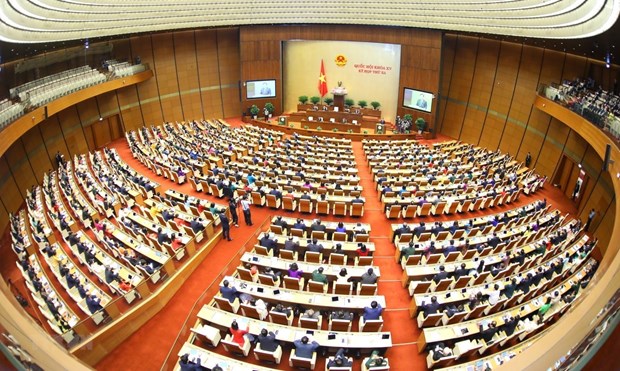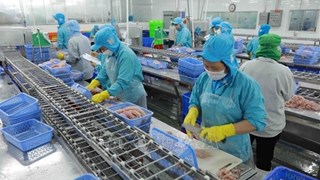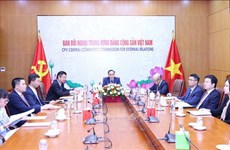NA deputies mull over draft Law on Medical Examination and Treatment
 An overview of the National Assembly's meeting. (Photo: VNA)
An overview of the National Assembly's meeting. (Photo: VNA)Hanoi (VNA) – National Assembly
deputies highlighted the need to clearly define the scale and tasks as well as
create a legal foundation to ensure the efficiency of the operation and develop the family doctor model during the discussion of the draft amended Law on Medical
Examination and Treatment on June 13.
Nguyen Thi Hue, a deputy from Bac Kan province,
said she agreed with the necessity to expand the family doctor model as mentioned
in the draft law, saying the project has been implemented by the Ministry of
Health during the 2016-2020 period with the goal of multiplying this model in the
Vietnamese health care system.
The family doctor model contributes to reducing the overloading at hospitals as well as the burden and workload for doctors while helping save hospitalisation and health insurance costs for patients, she said.
Hue pointed out problems that the model is facing such
as a lack of an information sharing mechanism between family doctors with the medical
system, uncontroled medical service fee and lack of coordination between family
doctors and referrals for patients.
She suggested that the
health sector make assessment and determine the scope, functions
and tasks of the family doctor model to perfect this model.
There should be policy support to expand the
family doctor model nationwide to increase personnel in the examination for
patients, Hue said.
Le Thu Ha, a NA deputy from Lao Cai province, shared Hue's view. The model has many advantages and worked well around the world,
however, it has not received due attention in Vietnam.
She proposed that a legal foundation should be
created for the development of family doctor model to contribute to improving
the quality of primary care in a comprehensive way and reduce the economic burden
for both patients and society.
Regarding the assessment of the capacity of
practitioners - one of the new points of the draft Law, delegate Le Van Cuong
from Thanh Hoa province suggested that, before 2035, the roadmap for capacity
assessment of practitioners should focus on doctors, nurses and midwives because
these positions account for about 80 percent of the total number of human
resources in health facilities and meet most of the people's basic needs in medical examination
and treatment.
He called for appropriate measures to
facilitate human resource coordination, health insurance payment and treatment policies for medical workers when registering to work at many
medical facilities.
"This will be convenient for doctors at
health stations who can register for medical examination and treatment at
district hospitals half of the working time to improve their skills,”
he said, adding that district hospital doctors can register to work at communal
health stations to meet people's demand.
Cuong also underlined the need to supplement the draft law with a
policy on fee exemption or support the cost of the regular general
practitioner system to improve the capacity of doctors at district hospitals
and solve the serious shortage of staff at communal health stations in the
future./.













